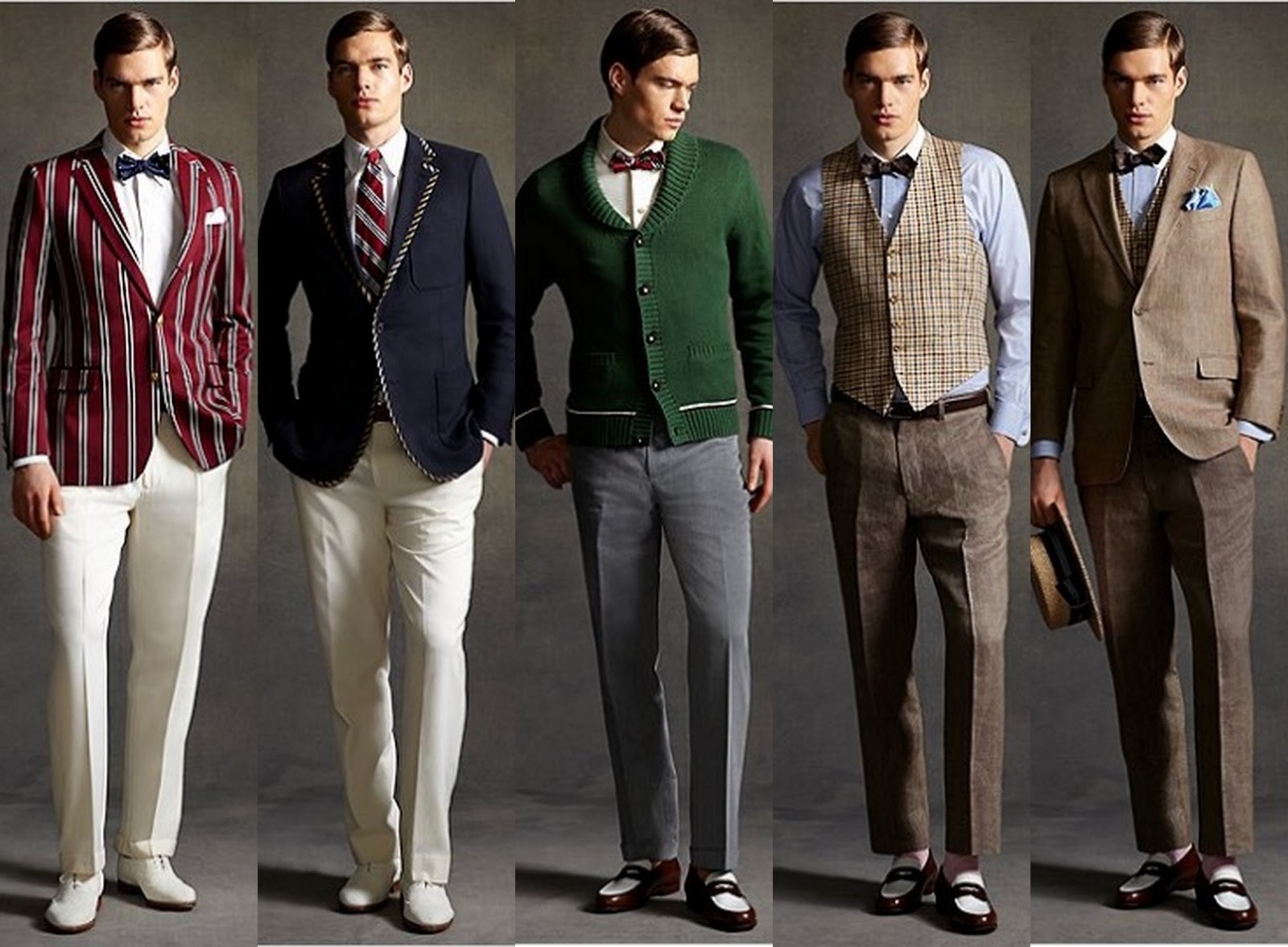The 1920s was a decade that witnessed a remarkable transformation in men's fashion, characterized by a blend of elegance, rebellion, and innovation. As the world emerged from the shadows of World War I, men began to embrace a style that mirrored the spirit of the Roaring Twenties. This period was marked by a break from traditional attire, leading to a fashion revolution that set the tone for modern menswear. The influence of social changes, cultural movements, and iconic figures played a pivotal role in shaping the fashion landscape of the time. From dapper suits to casual attire, the 1920s men's fashion was a reflection of the societal shifts and aspirations of men during this vibrant era.
As jazz music filled the air and speakeasies became the social hubs, men’s clothing began to evolve into something more than just functional wear. The rise of the flapper culture and the changing role of men in society contributed to a more relaxed yet sophisticated approach to dressing. This dynamic decade saw the introduction of new fabrics, patterns, and styles that not only made a statement but also symbolized a newfound sense of freedom and individuality.
In this article, we will explore the defining aspects of 1920s men's fashion, examining its key elements, influential figures, and the lasting impact it has had on contemporary style. What drove men to adopt these bold new looks? How did the fashion of the 1920s set the groundwork for future trends? Join us as we delve into the exquisite world of 1920s men's fashion and uncover its enduring legacy.
What Were the Key Elements of 1920s Men's Fashion?
In the 1920s, men's fashion was characterized by several key elements that defined the style of the decade. Some of the most notable features included:
- Suits: Tailored suits were a staple of men's fashion, often made from high-quality fabrics like wool and featuring bold patterns such as pinstripes or checks.
- Shirts: Collared shirts, often with detachable collars, were worn with ties or bow ties, adding a touch of sophistication.
- Accessories: Accessories played a crucial role, with men donning hats like fedoras and flat caps, along with pocket squares and cufflinks.
- Shoes: Oxfords and brogues were popular choices, often made with polished leather in various colors.
Who Were the Fashion Icons of the 1920s?
The 1920s were adorned with fashion icons who not only set trends but also influenced the way men dressed. One of the most notable figures was Charlie Chaplin, known for his classic bowler hat, cane, and well-fitted suits. His unique style resonated with the public and left a lasting impression on men's fashion.
Biography of Charlie Chaplin
| Name | Charlie Chaplin |
|---|---|
| Birth Date | April 16, 1889 |
| Profession | Actor, Comedian, Filmmaker |
| Notable Works | The Kid, City Lights, Modern Times |
| Death Date | December 25, 1977 |
How Did Social Changes Influence 1920s Men's Fashion?
The cultural and social changes of the 1920s played a significant role in shaping men's fashion. The end of World War I brought about a sense of liberation and a desire for self-expression. The emergence of jazz culture and the flapper movement encouraged men to embrace bolder styles, departing from the conservative clothing of previous decades.
What Fabrics and Patterns Were Popular?
During the 1920s, men's fashion saw a variety of fabrics and patterns that contributed to its distinctive look:
- Wool: The primary fabric for suits, wool provided warmth and structure.
- Silk: Often used for shirts and ties, silk added a touch of luxury.
- Patterns: Pinstripes, houndstooth, and checks became popular, reflecting the boldness of the era.
What Role Did Hollywood Play in Shaping 1920s Men's Fashion?
Hollywood emerged as a significant influencer of fashion during the 1920s. Movie stars like Douglas Fairbanks and Rudolph Valentino showcased glamorous styles that captivated audiences and set new trends. Their on-screen personas and off-screen lifestyles contributed to the allure of the tailored suit, further popularizing this look among men.
How Did the Great Gatsby Influence Men's Fashion?
F. Scott Fitzgerald's iconic novel, "The Great Gatsby," published in 1925, had a profound impact on men's fashion. The character of Jay Gatsby epitomized the opulence and elegance of the era, inspiring men to adopt lavish styles and luxurious fabrics. The book's portrayal of the Jazz Age and its protagonists highlighted the importance of appearance and status, leading to a fashion revolution.
What Lasting Impact Did 1920s Men's Fashion Have on Modern Style?
The influence of 1920s men's fashion can still be seen in contemporary styles today. Many elements from this era have made a resurgence in modern menswear, such as:
- Tailoring: The emphasis on well-fitted suits remains a cornerstone of men's fashion.
- Accessories: Hats and accessories continue to play a vital role in completing a man's outfit.
- Casual Elegance: The blending of formal and casual wear can be traced back to the relaxed styles of the 1920s.
Conclusion: The Enduring Legacy of 1920s Men's Fashion
In conclusion, the 1920s men's fashion was not just about clothing; it was a reflection of a dynamic society undergoing significant changes. The elegance, boldness, and creativity of this era continue to inspire designers and fashion enthusiasts alike. As we look back on the Roaring Twenties, we celebrate the legacy of a time when men dared to express themselves through their attire, leaving an indelible mark on the world of fashion.


